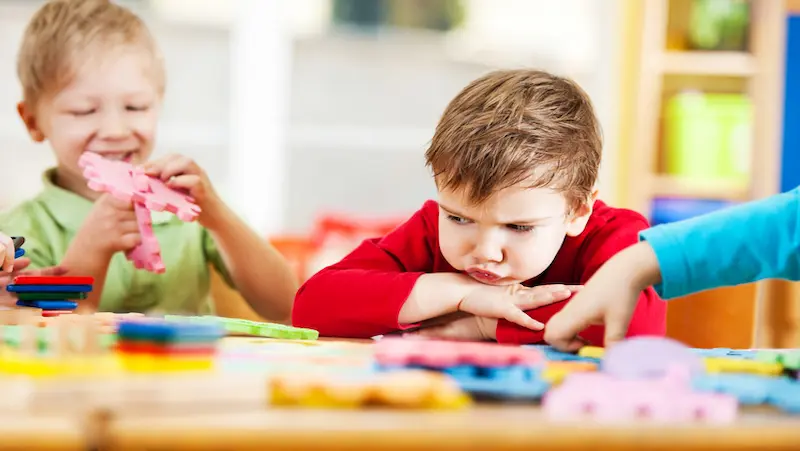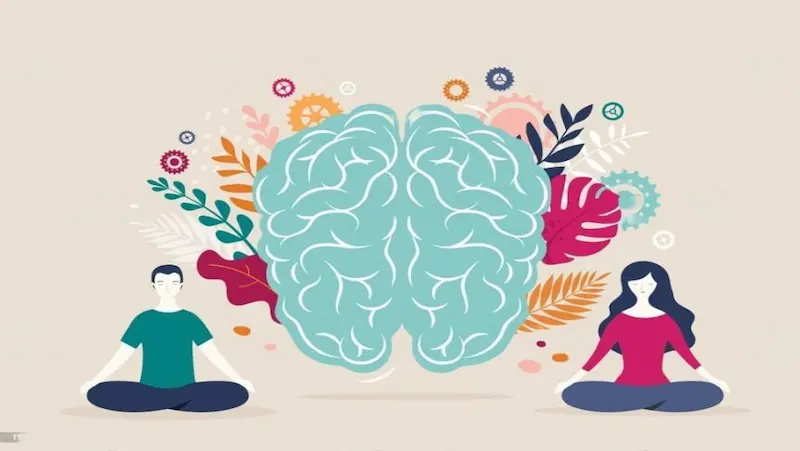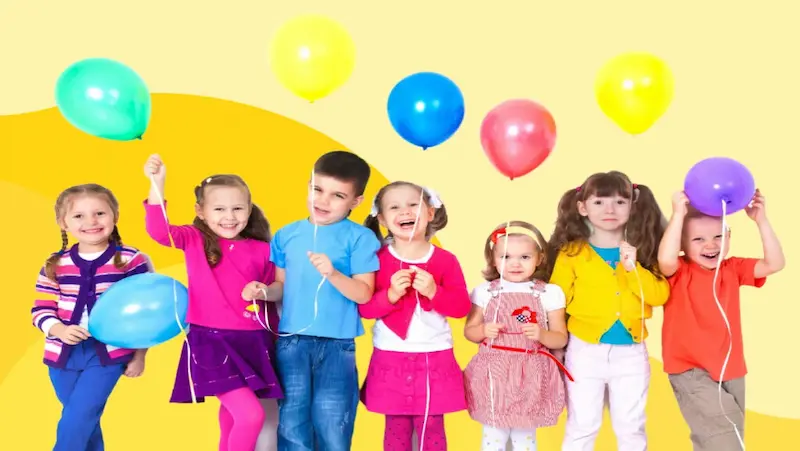Emotional regulation for kids plays a vital role in the development and well-being of children. As young minds navigate the complexities of life, they encounter a range of emotions that can be overwhelming and challenging to manage.
Emotional regulation refers to the ability to recognize, understand, and effectively respond to one’s own emotions in a healthy and constructive manner. It is a crucial skill that equips children with the tools they need to cope with stress, build positive relationships, and navigate various social situations.
Teaching children how to regulate their emotions empowers them to handle setbacks, communicate effectively, and develop resilience, setting a strong foundation for their emotional intelligence and overall mental health. This article explores the importance of emotional regulation for kids, highlighting its numerous benefits and offering insights into nurturing this essential skill.
Table of contents
- Understanding Emotional Regulation
- Signs of Poor Emotional Regulation in Children
- Strategies for Teaching Emotional Regulation
- Implementing Emotional Regulation Techniques in Daily Life
- Supporting Emotional Regulation in Different Age Groups
- Addressing Common Challenges
- Nurturing Emotional Well-being in the Long Run
- Conclusion
- Frequently Asked Questions
Understanding Emotional Regulation

What is emotional regulation?
Emotional regulation refers to the process of managing and modulating one’s emotions in response to internal and external stimuli. It involves the regulation of emotional arousal, intensity, and duration. Emotional regulation allows individuals to adapt to their environment, cope with stress, and engage in constructive behaviors. It encompasses various strategies, including self-soothing techniques, cognitive reappraisal, problem-solving, and seeking support from others.
Why is it challenging for children?
Children often face significant challenges when it comes to emotional regulation due to their limited cognitive and emotional capacities. Here are a few reasons why it can be challenging for children:
Limited vocabulary: Young children may struggle to articulate and label their emotions accurately. They might feel overwhelmed by intense emotions but lack the words to express how they are feeling, making it difficult to regulate their emotions effectively.
Teaching kids about emotions is essential as it equips them with the tools to understand, express, and manage their feelings effectively.
Developmental milestones in emotional regulation
Emotional regulation skills develop gradually as children grow. Here are some important milestones in the progression of emotional regulation:
Infancy (0-12 months): Infants begin to regulate their emotions through their caregivers’ responsive interactions. They rely on their caregivers’ soothing presence and learn to self-soothe by sucking their thumbs, cuddling a blanket, or engaging in repetitive movements.
Toddlerhood (1-3 years): Toddlers start to identify and label basic emotions like happiness, sadness, and anger. They may struggle with emotional regulation and exhibit tantrums or aggressive behaviors when overwhelmed. With guidance and support from caregivers, they learn simple coping strategies like taking deep breaths or hugging a stuffed toy.
Early childhood (4-6 years): Children become more proficient in recognizing and expressing a wider range of emotions. They start to develop self-control and can engage in basic problem-solving techniques. They also benefit from consistent routines and clear boundaries, which help them understand and regulate their emotions more effectively.
Middle childhood (7-11 years): As cognitive abilities continue to develop, children become more skilled at regulating their emotions. They can use cognitive reappraisal techniques to reframe situations and manage their emotional responses. They also start to understand and empathize with others’ emotions, which enhances their social interactions.
Adolescence (12+ years): Adolescents experience significant changes in their emotional landscape due to hormonal shifts and increased social pressures. Emotional regulation becomes more complex during this period, and individuals may need guidance in navigating intense emotions, making responsible decisions, and seeking support when needed.
Signs of Poor Emotional Regulation in Children

Emotional regulation is a crucial skill that allows individuals to manage and express their emotions in appropriate and healthy ways. For children, developing this skill is particularly important as it lays the foundation for their emotional well-being and social interactions.
Intense and frequent tantrums:
One of the primary signs of poor emotional regulation in children is the occurrence of intense and frequent tantrums. While tantrums are a normal part of child development, children who struggle with emotional regulation may experience them more frequently and with greater intensity. These tantrums may be triggered by seemingly small events and can last for extended periods, making it challenging for the child to regain control of their emotions.
Difficulty managing transitions:
Children with poor emotional regulation often find it challenging to navigate transitions between activities, such as going from playtime to mealtime or leaving a friend’s house. They may become overwhelmed by these changes and struggle to adapt, leading to emotional outbursts, resistance, or refusal to cooperate.
Overreacting to setbacks or disappointments:
Children who have difficulty regulating their emotions tend to overreact to setbacks or disappointments. They may become excessively frustrated, angry, or sad when things don’t go their way, even if the situation is minor. These strong emotional reactions can interfere with their ability to problem-solve and bounce back from adversity.
Impulsive behavior:
Impulsivity is another common sign of poor emotional regulation in children. They may act on their immediate emotions without considering the consequences of their actions. This can manifest as impulsive outbursts, interrupting others, or engaging in risky behaviors without thinking things through.
Strategies for Teaching Emotional Regulation

For teachers, helping students develop emotional regulation skills is crucial, as it promotes their well-being, enhances their academic performance, and prepares them for success in life. In this blog, we will explore strategies that educators can employ to foster emotional regulation in the classroom and create an environment that nurtures healthy emotions.
Cultivate Emotional Awareness:
The first step in teaching emotional regulation is to cultivate emotional awareness among students. Encourage open discussions about emotions, emphasizing the importance of recognizing and understanding their feelings.
Introduce a wide range of emotions and provide opportunities for students to express themselves through activities like journaling, art, or group discussions.
Teach Self-Regulation Techniques:
Teach students practical self-regulation techniques that they can utilize when they feel overwhelmed by their emotions. Breathing exercises, mindfulness techniques, and progressive muscle relaxation can help students calm themselves during stressful moments.
Develop Emotional Vocabulary:
Expand students’ emotional vocabulary by introducing them to a wide range of emotions. Help them understand that each emotion serves a purpose and has different levels of intensity. By having the language to describe their emotions, students can better communicate their feelings and needs.
Model Emotional Regulation:
Teachers play a crucial role as role models in the classroom. Demonstrate emotional regulation skills by managing your own emotions effectively and showcasing healthy coping mechanisms. When faced with challenging situations, model how to express emotions in a respectful and constructive manner.
Implement Social-Emotional Learning Programs:
Integrate social-emotional learning (SEL) programs into the curriculum to provide a structured framework for teaching emotional regulation. These programs offer comprehensive lessons on self-awareness, self-management, social awareness, relationship skills, and responsible decision-making. learn about robotics classes for kids also.
Implementing Emotional Regulation Techniques in Daily Life

Managing Emotions during challenging situations
Life presents us with various challenges, both big and small, that can trigger intense emotions. Learning how to manage these emotions empowers us to respond in a more constructive and healthy manner. Here are some effective techniques for emotional regulation:
Mindfulness and self-awareness: Cultivating mindfulness allows us to be present in the moment and observe our emotions without judgment. By developing self-awareness, we can identify the triggers that lead to emotional upheaval and respond consciously.
Deep breathing and relaxation techniques: When faced with intense emotions, taking slow, deep breaths can help activate the body’s relaxation response. Engaging in relaxation techniques such as progressive muscle relaxation or guided imagery can also promote a sense of calm.
Cognitive reframing: Our thoughts greatly influence our emotions. Practice identifying negative or irrational thoughts and challenge them with more realistic and positive alternatives. This cognitive reframing technique can help shift our perspective and alleviate distressing emotions.
mindfulness actvities for kids A Journey of Calm and Focus, Offering Benefits of Improved Attention, Emotional Regulation, and Overall Well-being
Helping children recognize and label their emotions:
Children also experience a wide range of emotions, and teaching them how to recognize and label these feelings is crucial for their emotional development. Here are some strategies for helping children with emotional regulation:
Encourage open communication: Create a safe and non-judgmental environment where children feel comfortable expressing their emotions. Encourage them to share their feelings openly and listen attentively without dismissing or invalidating their experiences.
Teach emotion vocabulary: Introduce children to a variety of emotions and help them understand what each emotion represents. Use age-appropriate language and provide examples of situations that may elicit these emotions. This vocabulary enables children to articulate and identify their feelings accurately.
Supporting Emotional Regulation in Different Age Groups

Strategies for Toddlers and Preschoolers
Toddlers and preschoolers are in the early stages of emotional development. They are learning to navigate a wide range of emotions, often experiencing intense feelings they don’t yet fully understand. Here are some strategies to support their emotional regulation:
Provide a Safe and Consistent Environment: Create a safe and predictable environment for young children. Consistent routines and clear boundaries help them feel secure, which can contribute to better emotional regulation.
Teach Simple Emotion Identification: Help children recognize and label their emotions by using simple language. Encourage them to express their feelings by saying, “I see you’re feeling sad. Would you like a hug?” This helps them develop an emotional vocabulary and promotes self-awareness.
Techniques for School-Age Children
School-age children have a broader emotional range and can comprehend more complex concepts. They may face challenges such as peer pressure, academic stress, and a growing sense of independence. Here are some techniques to support emotional regulation in this age group:
Foster Emotional Intelligence: Help children develop emotional intelligence by discussing and exploring different emotions. Encourage them to talk about how they feel and validate their experiences. Teach them empathy by discussing others’ emotions and perspectives.
Teach Problem-Solving Skills: Guide children in developing problem-solving skills to address emotional challenges. Encourage them to identify the problem, brainstorm possible solutions, evaluate their effectiveness, and choose the best approach. This empowers them to take control of their emotions and find constructive solutions.
Kids’ nutrition is crucial because it lays the foundation for their growth, development, and overall well-being.
Addressing Emotional Regulation in Teenagers
Teenagers experience significant emotional and hormonal changes, coupled with increased social pressures and self-identity exploration. Supporting emotional regulation during this transitional period is vital. Here are some ways to address emotional regulation in teenagers:
Promote Self-Reflection: Encourage teenagers to reflect on their emotions and understand their triggers. Help them develop self-awareness by journaling, doing mindfulness exercises, or engaging in reflective discussions.
Teach Stress Management Techniques: Teach teenagers stress management techniques, such as deep breathing exercises, meditation, or engaging in hobbies that bring joy and relaxation. These practices help them cope with the pressures of adolescence and regulate their emotions effectively.
Addressing Common Challenges

Dealing with Tantrums and Meltdowns
Tantrums and meltdowns are a natural part of a child’s development and are often triggered by frustration, exhaustion, hunger, or the inability to communicate their needs effectively. Here are some tips to help you navigate through these challenging moments:
Stay Calm: It is crucial to remain calm during tantrums as children may mirror your reactions. Taking a deep breath and keeping your composure will help diffuse the situation.
Validate Their Feelings: Acknowledge your child’s emotions and let them know that you understand their frustration. Use empathetic phrases like, “I can see you’re upset” or “I understand it’s frustrating for you.”
Provide a Safe Space: Create a designated area where your child can go to calm down during a meltdown. This could be a cozy corner with pillows or a quiet room. Encourage them to express their emotions in a safe and non-destructive way.
Handling Anxiety and Fears
Anxiety and fears are common in children and can manifest in various forms such as separation anxiety, fear of the dark, or fear of new situations. Here are some strategies to support your child through their anxiety:
Create a Safe Environment: Foster a secure and comforting environment at home where your child feels supported and loved. Offer reassurance and let them know they can always approach you for help or guidance.
Empower with Knowledge: Educate your child about their fears by providing age-appropriate information. Books, stories, or simple discussions can help them understand and overcome their anxieties.
Encourage Open Communication: Create a space for your child to express their fears and concerns openly. Listen attentively without judgment and validate their feelings. Assure them that their emotions are normal and provide comfort.
Empowering Young Minds with Effective Stress Management for Kids Nurturing Emotional Resilience and Equipping Them with Essential Life Skills to Thrive in Challenging Situations.
Nurturing Emotional Well-being in the Long Run

Promoting healthy habits and routines
Prioritize self-care: Taking care of our physical and mental health is crucial for emotional well-being. Engage in activities that nourish your body, such as regular exercise, sufficient sleep, and a balanced diet.
Establish a routine: Structure and predictability in daily life can provide a sense of stability and security. Create a consistent schedule that includes time for relaxation, work, hobbies, and socializing.
Practice mindfulness: Mindfulness allows us to stay present and aware of our thoughts and emotions. Incorporate mindfulness techniques like meditation or deep breathing exercises into your routine to reduce stress and enhance emotional resilience.
Instilling good habits for kids is like planting seeds that grow into a foundation for lifelong success and well-being, fostering positive behavioral patterns from an early age
Encouraging self-expression and creativity
Engage in expressive activities: Encourage self-expression through activities like journaling, painting, dancing, or playing a musical instrument. These outlets provide a safe space to process emotions, release tension, and explore creativity.
Seek support through communication: Share your thoughts and feelings with trusted friends, family members, or a therapist. Verbalizing emotions can lead to a deeper understanding of oneself and foster a sense of connection and support.
Explore hobbies and passions: Pursuing activities that bring joy and fulfillment nurtures emotional well-being. Discover and engage in hobbies or interests that align with your values and provide a sense of purpose.
Celebrating progress and fostering resilience
Acknowledge achievements: Celebrate both big and small accomplishments, fostering a positive outlook. Recognize your progress and give yourself credit for overcoming challenges, which reinforces self-confidence and motivation.
Embrace failure as a learning opportunity: View setbacks as stepping stones rather than roadblocks. Learn from failures, adapt, and maintain a growth mindset. Resilience comes from the ability to bounce back stronger and wiser.
Cultivate optimism and gratitude: Practice gratitude by reflecting on the positive aspects of your life regularly. Focus on the present moment and cultivate optimism, even in difficult times. A positive mindset helps build resilience and enhances emotional well-being.
Conclusion
In conclusion, it is crucial for parents to start implementing strategies to support their children’s growth and development. By taking proactive steps, parents can create a nurturing and stimulating environment that fosters their children’s overall well-being and success.
Encouraging a love for learning is another vital strategy for parents to implement. Creating a stimulating environment that promotes curiosity and exploration can help children develop a lifelong passion for acquiring knowledge. Engaging in educational activities, such as reading together, visiting museums, or participating in hands-on experiments, can foster intellectual growth and critical thinking abilities.
Every effort made by parents to support their children’s development will have a lasting impact, helping them thrive academically, emotionally, and socially and learning robotics for kids. Remember, parenting is a continuous journey, and the dedication and love parents invest in their children’s upbringing will shape their lives and future endeavors.
Also, BrightChamps provides a comprehensive platform for learning about money for kids, offering interactive and engaging resources that teach financial literacy, budgeting, saving, and other essential money management skills.
Frequently Asked Questions
A1. Emotional regulation is crucial for children as it helps them manage and express their emotions appropriately, cope with stress, build healthy relationships, and enhance overall well-being.
A2. Signs of a child struggling with emotional regulation include frequent tantrums, difficulty calming down, extreme emotional reactions, impulsivity, and trouble adapting to changes.
A3. Parents can support their children’s emotional regulation by creating a nurturing environment, teaching coping strategies, providing consistent routines, encouraging open communication, and being role models for healthy emotional expression.
A4. Yes, parents can use techniques such as deep breathing exercises, mindfulness activities, promoting self-awareness, validating emotions, teaching problem-solving skills, and encouraging positive self-talk.
A5. Emotional regulation positively impacts a child’s overall well-being by fostering resilience, improving mental health, promoting self-control, enhancing social skills, and facilitating academic success.
A6. Common mistakes include dismissing or invalidating their child’s emotions, overreacting to their emotions, failing to set clear boundaries, and not providing consistent support or guidance.
A7. Practical tips include creating a calm and structured environment, teaching relaxation techniques, encouraging physical activity, establishing predictable routines, and using positive reinforcement.
A8. Parents can recognize and validate their child’s emotions by actively listening, acknowledging their feelings, providing empathy and understanding, and helping them find appropriate ways to cope with those emotions.
A9. Yes, age-specific strategies may include using simple language and visual aids for young children, teaching problem-solving skills to older children, and fostering independence and self-reflection in adolescents.
A10. Parents can model healthy emotional regulation by managing their own emotions effectively, expressing emotions in a calm and constructive manner, and demonstrating problem-solving and self-care strategies.


 We are an army of educators and passionate learners from BrightChamps family, committed to providing free learning resources to kids, parents & students.
We are an army of educators and passionate learners from BrightChamps family, committed to providing free learning resources to kids, parents & students.







